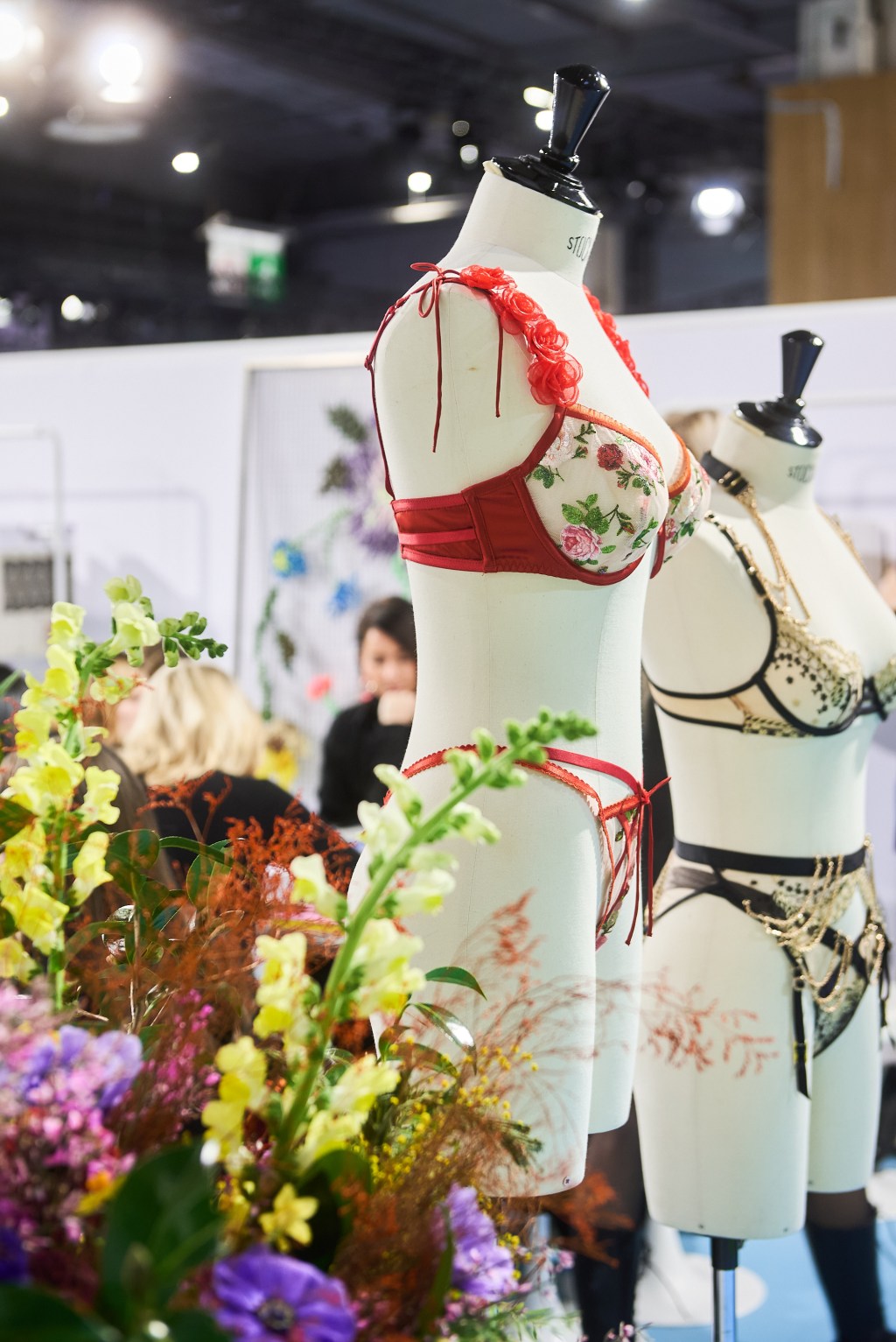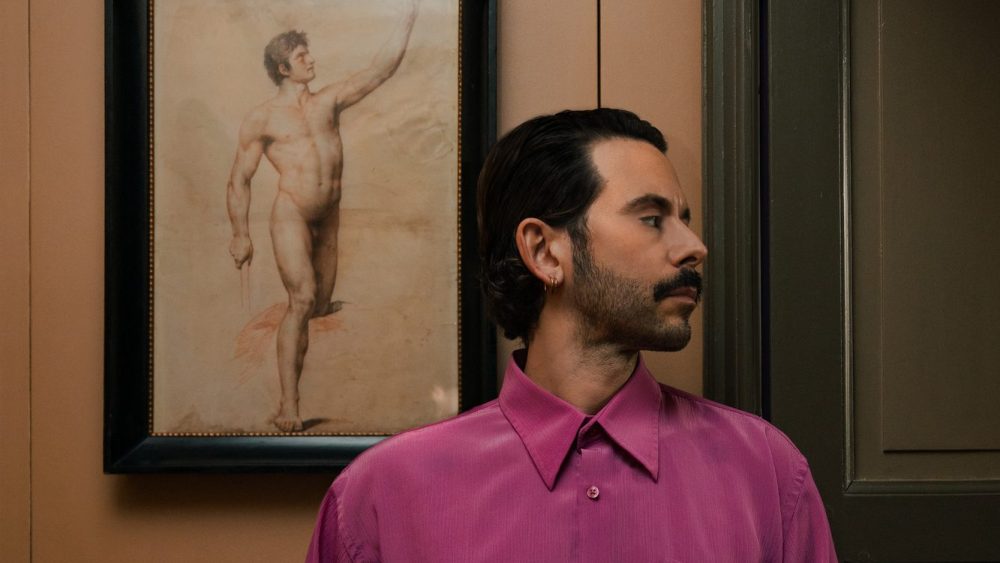PARIS — The Salon International de la Lingerie continued to shake things up with its 60th anniversary edition, its second since being taken over by WSN, the organizer of Who’s Next.
The innerwear industry is also in flux, with brands seeking to evolve to meet new consumer sensibilities and retailers, especially independents, struggling to stay afloat. The high-profile woes of heritage brands Lejaby, placed in liquidation in early January despite several turnaround attempts in recent years, and Italy’s La Perla, whose seamstresses recently appealed to the European Parliament for support, were also front of mind for many.
“Some of our peers are disappearing; the market is evolving,” said Claire Masson, brand director for Aubade.
French domestic sales of women’s lingerie fell 4.8 percent in value in the first 10 months of 2023, to 1.8 billion euros, according to data from Kantar for the Salon International de la Lingerie. Exports of French women’s lingerie were up slightly, gaining 1.16 percent to 658 million euros, according to data from French customs and the Fédération de la Maille, de la Lingerie et du Balnéaire.
Most major players said they had seen a difficult second half across markets. “The independent boutiques are suffering, in every market,” said Simone Pérèle brand and product director Stéphanie Bujard Pérèle. While department stores and online performed better despite lower footfall, she said, “Overall, we were down for the year because of wholesale.”
Sophie Knis, marketing and communications manager at Wacoal Europe, said, “We’re lucky that we’re part of a big group; when one brand is down, another one is up. It hasn’t been an easy year, but we’re doing well.”
In Europe, the retail landscape is shifting as swathes of independent boutique owners reach retirement age without finding successors. “In France, a lot of stores are closing; there is definitely less space in the middle of the market, although luxury is doing well,” said Groupe Chantelle chief creative officer Renaud Cambuzat.
“Lots of stores are closing, largely because of the age pyramid,” agreed Magalie Le Banner, who was named president at Empreinte this January. “In the U.K., France and Germany, the retail landscape is in a period of flux. Few boutiques are taken over and online pure players are continuing to grow,” she said. “Chains are growing their market share, but they are suffering too.”
“It will be a hard year,” agreed lingerie consultant Petra Schöfert, attending with a group of independent retailers from Germany. “But for those that survive, there is business to be taken.” She praised the show’s brighter layout and more contemporary offer.
The changing dynamics of lingerie retail mean brands “need to seek out growth through fashion boutiques,” said Matthieu Pinet, managing director of SIL and sister fabric event Interfilière. As such, the event continues to broaden its offer and build bridges with Who’s Next, also held from Jan. 20 to 22 at Porte de Versailles. “There are more lingerie boutique closures than openings. If the show only offered lingerie, we wouldn’t be able to attract a broader portfolio of boutiques.”
Pinet continued, “Attitudes to lingerie are changing. Women understand that they can play with lingerie and see it more as a fashion product. Thanks to the association with WSN, we are pushing links with fashion.”
As such, the show’s offer was broader than ever, with an expanded wellness space and a bigger focus on emerging and creative labels. For the first time, visitors entered the show through a hall filled with smaller labels’ offerings, before reaching the stands of the industry heavyweights.
Events included a fashion show tracing the history of lingerie to celebrate the show’s anniversary on the Saturday evening, as well as a performance celebrating French corsetry expertise at the Cirque d’Hiver on the Sunday evening staged by trade association Promincor — Lingerie Française, with the support of state agency DEFI.
Groupe Chantelle’s Cambuzat praised the creativity of the new generation of innerwear designers. “The lingerie market is extremely dynamic on a creative level,” said Cambuzat. “There’s a lot going on, but I think that’s here to stay.”
In recent years Chantelle has opened up its Epernay factory to aid young designers and help preserve savoir-faire in France. “We help them with production, development and our stock of materials,” said Cambuzat. So far, it has helped around 60 young labels to develop their collections. “Our aim is also to help preserve and valorize the factory,” he explains. “Making corsetry desirable as an industry is an important topic.”
Corsetry is on the rise again after a period focused on comfort, but codes have changed, Cambuzat said, and women are increasingly buying lingerie for themselves, rather than as a tool for seduction. A return of retro styles “is driven by young people and the growth of second-hand,” he said.
“Women are seeking to please themselves, rather than others, with their lingerie choices,” agreed Aubade’s Masson. The label is also seeking to expand its register with more pieces like bodysuits that can double as ready-to-wear, including in its line created with model Cindy Bruna, among the highlights in its fall 2024 collection.
Groupe Chantelle continues to reap the benefits of its repositioning under a single masterbrand.
“Chantelle is growing,” said Cambuzat. “We’re now seeing the effects of our restructuring, and it’s a powerful growth driver.”
Under high-end line Chantelle X, it showed a more colorful collection with new constructions and an expanded ready-to-wear offer inspired by the ‘90s, referencing fashion designers Jean Paul Gaultier and Martin Margiela. “We’re continuing to affirm a vision closely linked to fashion,” said Cambuzat.
There was also a capsule designed with inclusive fashion label Ester Manas. After debuting swimwear last summer under the Chantelle Pulp nameplate, the company rolled out lingerie under the same moniker, with a younger, more inclusive positioning and size range and colorful silhouettes. Pulpies, a range of seamless microfiber panties in colorful hues offered in little boxes inspired by cosmetics, were also new to the offer.
Simone Pérèle, which celebrated its 75th anniversary last year, has high hopes for a return to more sophisticated lingerie, and injected its fall 2024 collection with pops of color and shine against sensual embroideries and plays on transparency. “The past few years were marked by demand for more basic pieces; people are going back to wanting more feminine lingerie,” said Bujard Pérèle.
One brand reporting strong demand was Skarlett Blue, which is expanding rapidly outside the U.S. and tapping into what it sees as a gap in the market for pretty, well-fitted designs for smaller cup sizes. “We’re hitting the gap left by Elle Macpherson,” said international sales director Denise Shepherd. “When the market is in turmoil, the fact that we are an established brand in America is reassuring for retailers.”
Reinvented shapewear was a strong theme at the show as brands seek to tap into demand driven by Kim Kardashian’s Skims. “Shapewear is doing really well, it’s definitely back, but with a more lifestyle positioning,” said Cambuzat.
Wacoal, for example, was showing updated shapewear silhouettes designed to create an hourglass figure, including an innovative model with a deep “V” back that could be worn under backless dresses, for example, in what it claims is a market first. Aubade was also focusing on both shapewear and vintage-inspired innerwear, introducing a sculpting backless bodysuit and a satin corset, for example.
High-end brands channeled a more couture aesthetic, in line with demand for statement pieces that double up as ready-to-wear. Among highlights here were Japanese label Soeur Tokyo’s creative vintage aesthetic mixing inner and outerwear, and 130-year-old brand Cadolle, both showing within the Exposed space for designer labels. “Young women adore our corsets, they love to wear them with jeans, for example,” said Patricia Cadolle, co-owner of the company, which has been handed down through six generations of women. “They have become fashionable again.” The label’s high-waist briefs are also selling well, she said.
Atelier Amour, also showing within Exposed, was founded by Aubade and Simone Pérèle alum Rachel Bouchon in 2015, aiming to tap into a gap in the market for well-made yet erotic pieces with simple sizing making it easy to buy — especially as a gift — and accessible pricing. The brand is seeing strong demand, despite what she described as a definite waning of consumer sentiment in the second half across markets. “I’m lucky, I’ve been preserved from the crisis, our category remains largely unaffected,” she said.
Parallels with the growing well-being market also abounded. As well as a wealth of sexual wellness labels, concepts like Maison Plouf, with made-in-France detergents and associated hypoallergenic fragrances sold separately, were aiming to tap into gaps in the market.
Period wear, breastfeeding and post-surgical collections were also growing categories. In a crowdfunded brand selection sponsored by Ulule, Delphine Di Rosa was debuting her colorful designs for breastfeeding with the F’Latte brand. She had spotted a gap in the market for desirable products — her designs incorporate fabrics like lace and satin — with a strong sustainability angle. “Since we launched, we have saved more than a million nursing pads,” she said.
Australian label Modibodi, one of the leaders in period lingerie outside the U.S., was a first-time exhibitor as it opens up for wholesale. Recently awarded B Corp certification, the brand’s biggest markets are the U.K., France and Germany, said chief executive officer Kerry Cusack, who joined the firm last August after being approached by owner Essity, which bought the brand in 2022. “Wholesale gives us an opportunity to put the product in the hands of the customer,” she said. “People need to be able to touch and feel the products.”
Modibodi was showcasing a new high-end line, Renaissance, with its first matching sets, made from recycled nylon with merino wool lining, as well as a ballet collection for young girls. “The category is getting more mature and the product is getting more interesting,” said Cusack.
At around 16,000, unique visitor traffic at SIL and sister fabric show Interfilière was up 4.6 percent year-on-year.
The summer edition of the show — traditionally held in early July and focused more on swimwear — will be hosted from Sept. 10 to 12 in the same hall as fashion event Who’s Next. The move is in part to alleviate difficulties over the summer ahead of the Olympic Games, and follows a survey of attendee expectations.


